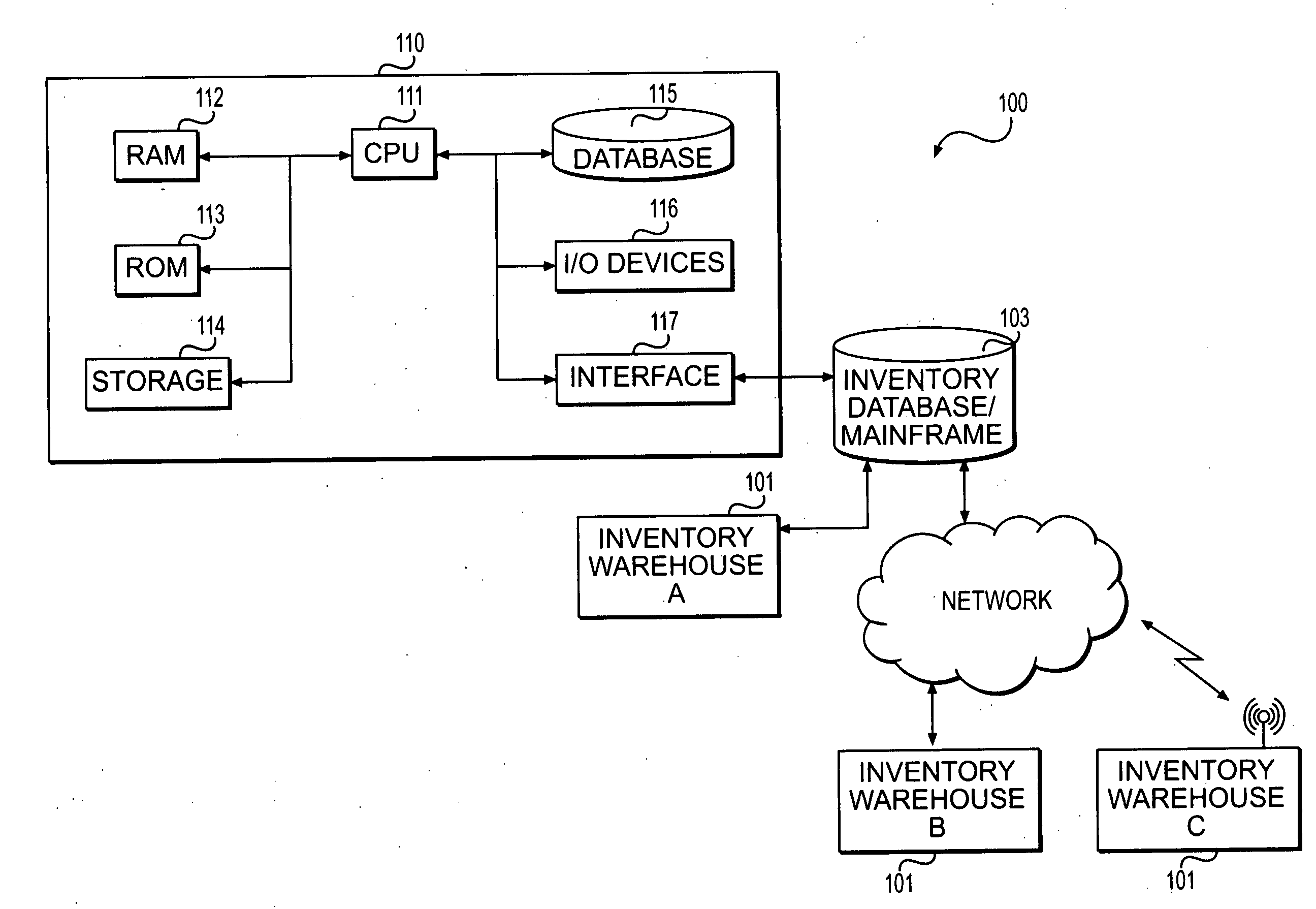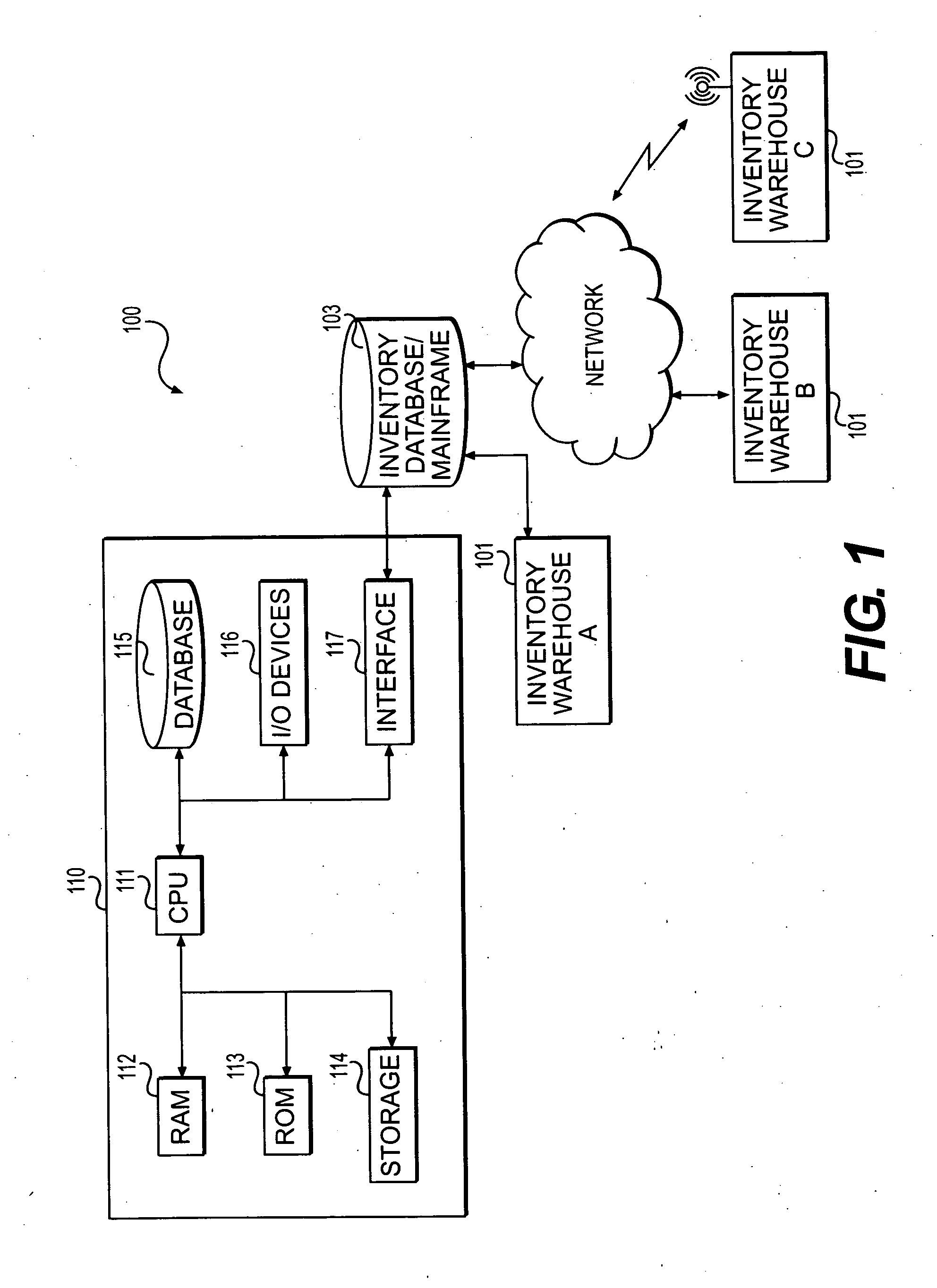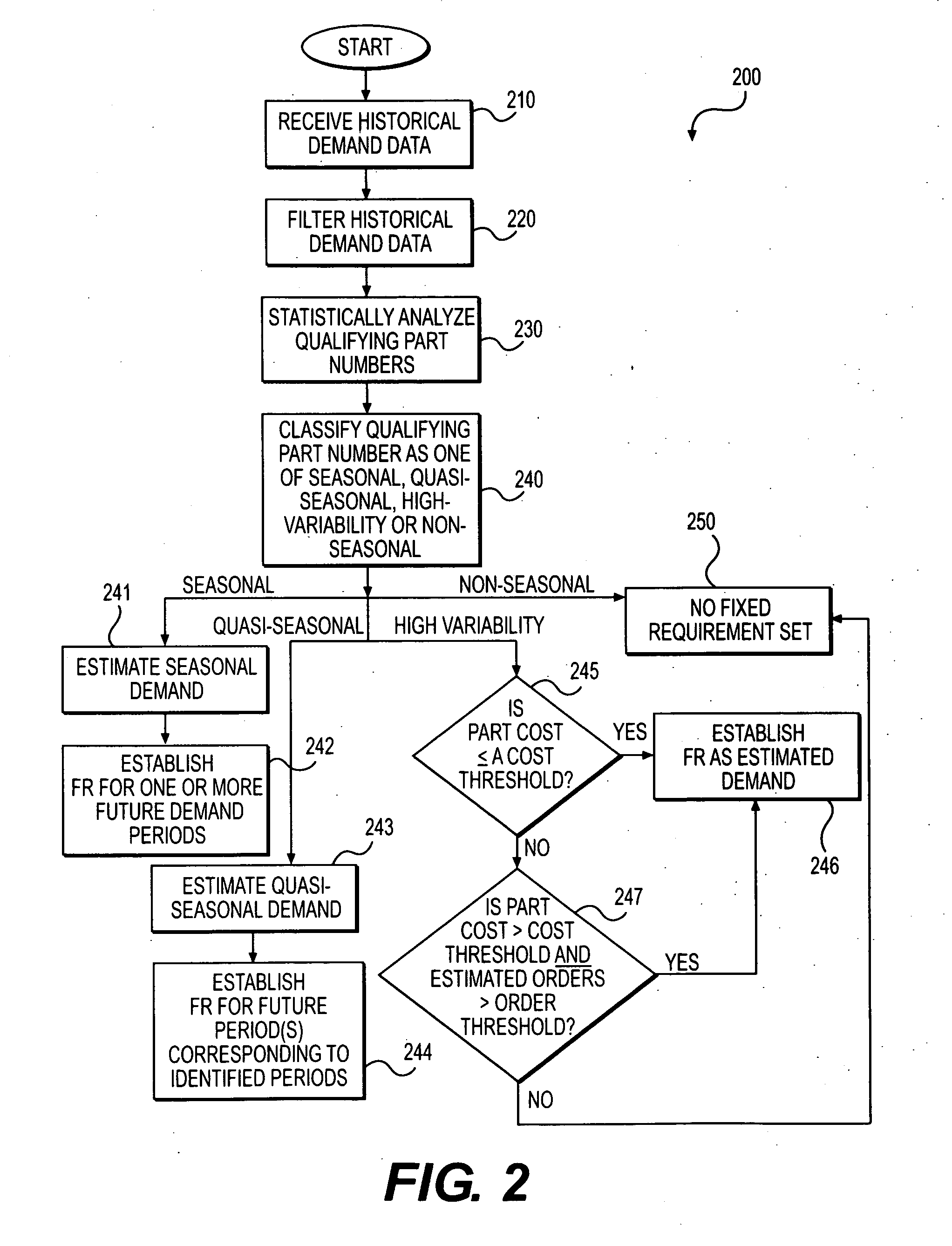Method for forecasting a future inventory demand
a technology for forecasting and inventory, applied in forecasting, data processing applications, instruments, etc., can solve the problems of reducing and/or wasting the usable life of parts, consuming valuable inventory management resources, and building up unused inventory for some parts. high variability
- Summary
- Abstract
- Description
- Claims
- Application Information
AI Technical Summary
Benefits of technology
Problems solved by technology
Method used
Image
Examples
Embodiment Construction
[0013]FIG. 1 provides a block diagram illustrating an exemplary disclosed inventory environment 100. Inventory environment 100 may include any type of environment associated with monitoring and / or managing an inventory that includes a population of elements. For example, inventory environment 100 may include a product warehouse configured to receive and distribute large numbers of products for operating a business. Inventory environment 100 may include, among other things, an inventory warehouse 101 containing a plurality of products, an inventory database 103, and a system 110 for forecasting future inventory demand.
[0014]Inventory warehouse 101 may include any type of facility for storing a plurality of products. Products, as the term is used herein, may include any physical or virtual element that may be used as a product associated with a business. Non limiting examples of physical products may include machines or machine parts or accessories such as, for example, electronic har...
PUM
 Login to View More
Login to View More Abstract
Description
Claims
Application Information
 Login to View More
Login to View More - R&D
- Intellectual Property
- Life Sciences
- Materials
- Tech Scout
- Unparalleled Data Quality
- Higher Quality Content
- 60% Fewer Hallucinations
Browse by: Latest US Patents, China's latest patents, Technical Efficacy Thesaurus, Application Domain, Technology Topic, Popular Technical Reports.
© 2025 PatSnap. All rights reserved.Legal|Privacy policy|Modern Slavery Act Transparency Statement|Sitemap|About US| Contact US: help@patsnap.com



